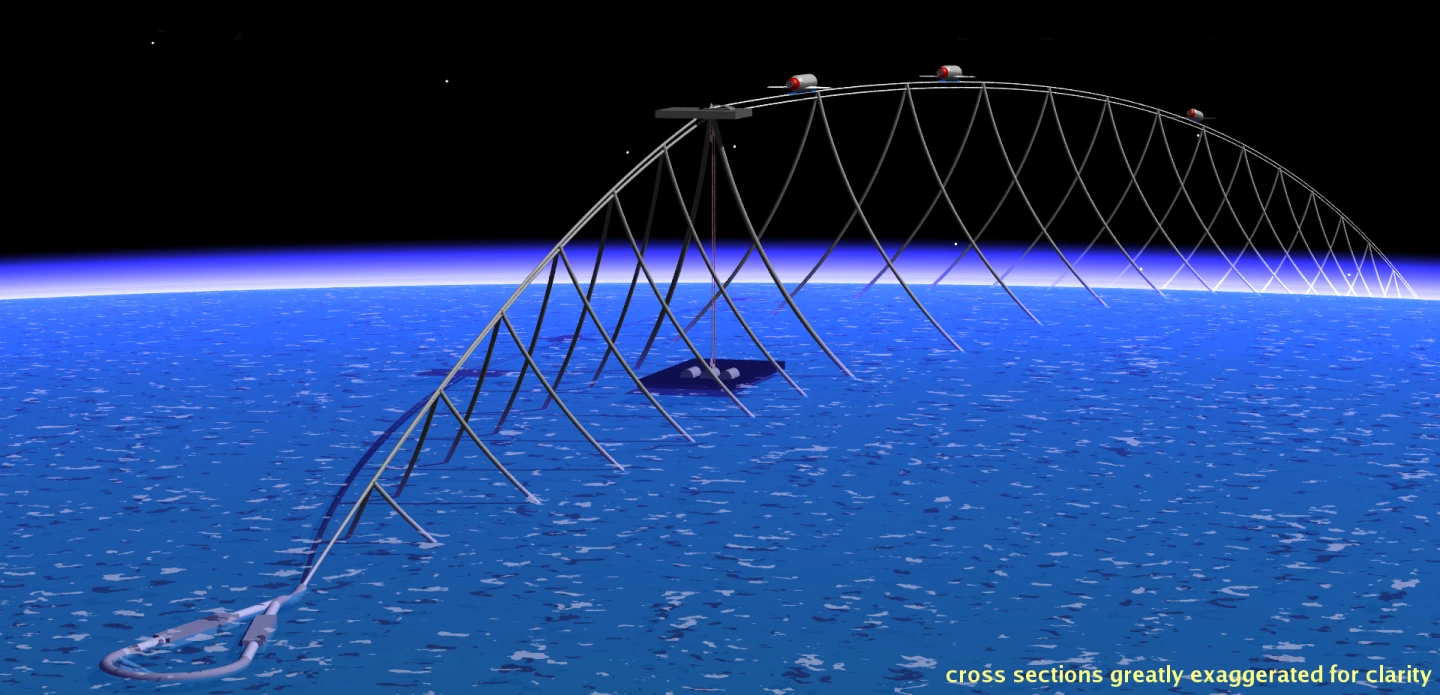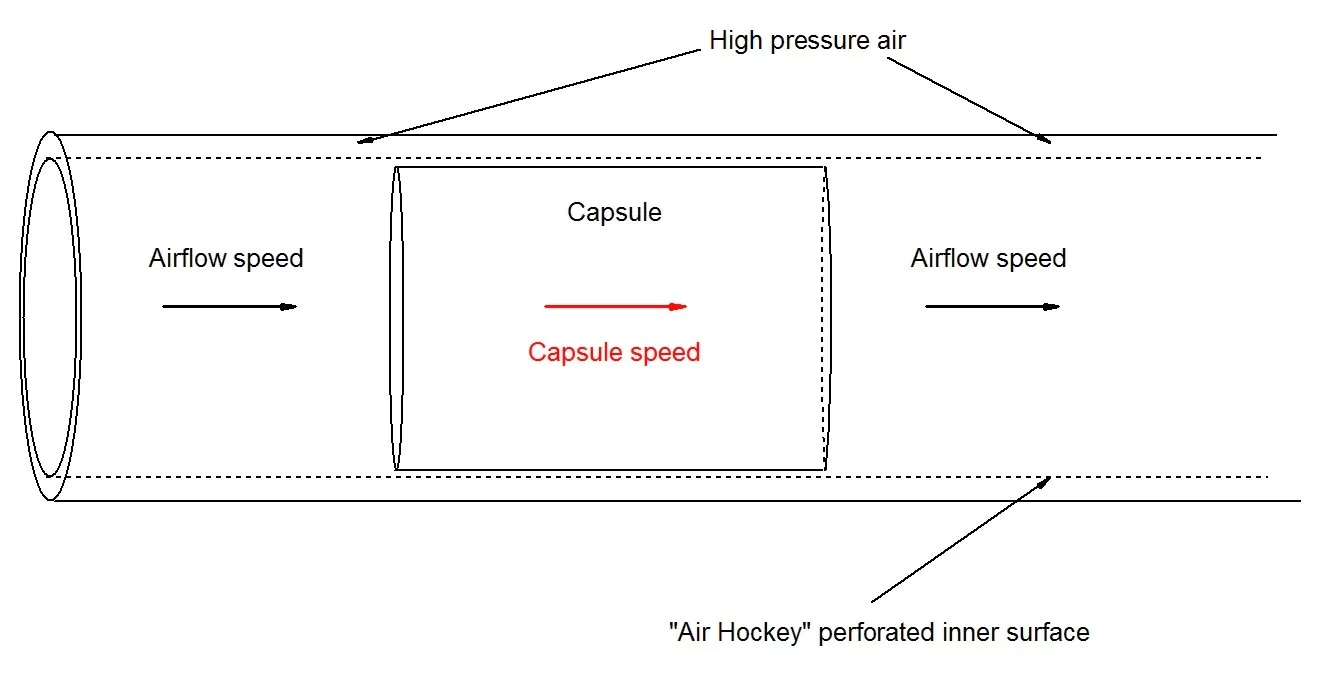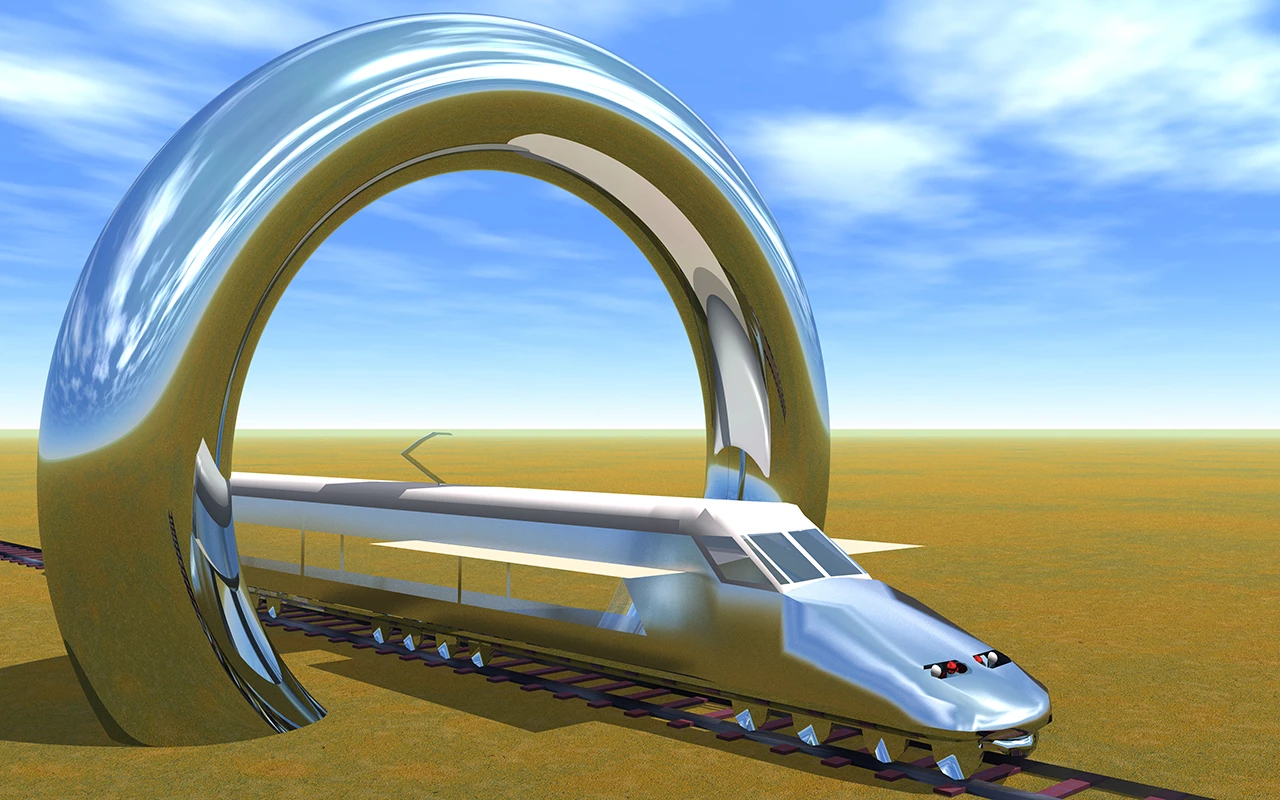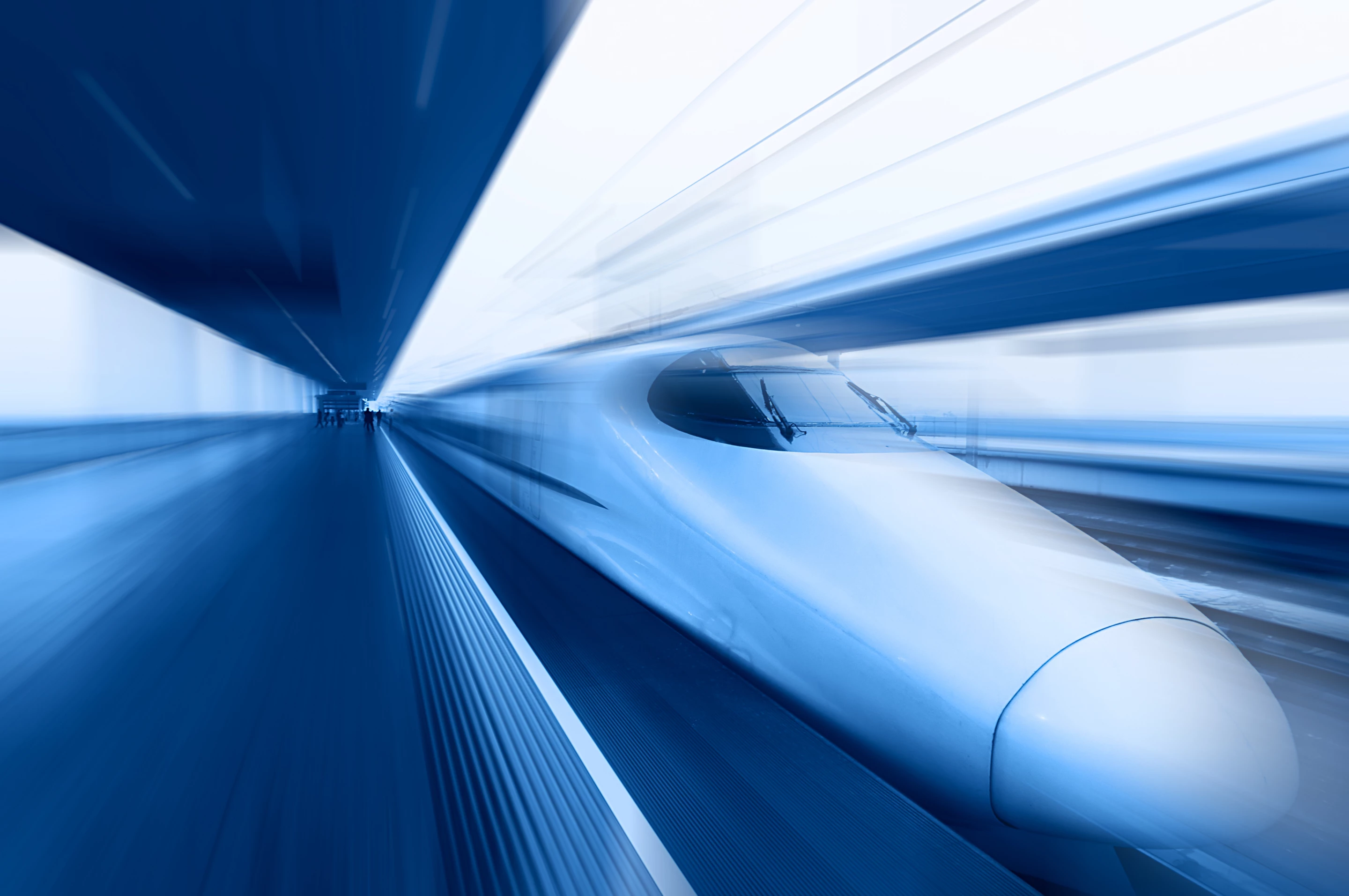Over the past year, Elon Musk, billionaire founder of PayPal, Tesla, and SpaceX, has been floating the notion of a "Hyperloop" as a future replacement for bullet trains; one that would get commuters from San Francisco to Los Angeles in as little as 30 minutes. There has been much speculation over how the Hyperloop works, as Musk has revealed very few details. So what has Musk actually said and what might this translate to in the real world?
What has Musk actually revealed about the Hyperloop? Putting together the bits and pieces from his comments over the past year amounts to something of a performance brief for what the Hyperloop would be capable of. In addition to the killer feature (downtown Los Angeles to downtown San Francisco in 30 minutes), we know that Hyperloop would double the gate-to-gate average speed of an aircraft over that distance, which is 560 km (350 miles). Musk has said Hyperloop is a non-scheduled service which leaves when you arrive, is immune to the weather and never crashes. The only specific technical hints Musk has provided is that it's not a vacuum tunnel, but is a cross between Concorde, a railgun and an air hockey table. This makes quite an impressive list of attributes. Naturally, there is a lot of speculation as to what Musk's Hyperloop must be.
It's clear that he is proposing a system for subsonic transport. Travelling between downtown LA and downtown SF in 30 minutes gives a speed of about Mach 0.91. The same conclusion comes from working out the average speed of an aircraft. Gate-to-gate, the trip between LAX and SFO (337 miles) is listed by the airlines as one hour and 19 minutes, for an average speed of about 255 mph (410 km/h), or about Mach 0.33. Twice this is Mach 0.66.
Business Insider may have been first with its suggestion that the Hyperloop is the old Rand Corporation's Very High Speed Transit System. Unfortunately, this system must run in a vacuum tunnel, which Musk has specifically ruled out. In addition, failure of the control computer would allow cars in the Rand system to collide, which seems to conflict with Musk's claim that the Hyperloop capsules can never crash. The same issue also argues against the popular suggestion that the Hyperloop is essentially a version of the ET3 maglev system.
Another favorite idea is that Musk's Hyperloop may be some version of a Lofstrom Loop, otherwise known as a launch loop. Originally proposed for launching payloads into orbit, a Lofstrom Loop is in essence a vacuum sheath measuring thousands of kilometers long that contains a rotor of iron or other magnetic material. The rotor is magnetically levitated within the sheath, and rotates around the loop at a speed well in excess of the orbital velocity at the Earth's surface (7.9 km/s, or 17,700 mph). The rotor velocity assumed in design studies is usually around 14 km/s (35,000 mph). An external capsule is linked to the loop magnetically, so that it accelerates to the speed of the rotor within the sheath.

Because the rotor is moving faster than orbital velocity, it is pushed away from the Earth's surface by centrifugal force. The maximum altitude of the loop is defined by the length of tethers that attach the sheath to the ground. In the original designs, the top portion of the loop would be around 80 km (50 miles) above the ground, but a loop could be built with an altitude of 100 meters, if there were a reason.
Such a loop could be used for travel between points on the Earth's surface as easily as it can launch payloads. But going by what Musk has said, the Hyperloop does not seem to be a Lofstrom Loop.
The distance from downtown LA to downtown SF is about 560 km (350 miles) as the crow flies. The hypersonic rotor within the loop stretches that distance in both directions, so would be more than twice that length, say around 1,200 km (750 miles). This rotor would have the equivalent energy of about a four-megaton thermonuclear bomb, which some might deem less than ideal in a downtown location. And, use of a Lofstrom loop for subsonic travel between cities is out of proportion to the task. The rotor has to be moving well in excess of escape velocity to suspend the loop in the air. If it is slower, the Lufstrom loop lies on the ground, where it can propel a ground-based bullet train, and encounter all the usual problems.
So if Musk's Hyperloop isn't in a vacuum tunnel, and isn't a Lofstrom Loop, what is it?
The most interesting of Musk's statements is that the Hyperloop is a cross between the Concorde, a railgun, and an air hockey table. The Concorde was fast and revolutionary for personal transport, a railgun uses electromagnetic forces to transport objects at high speeds, and an air hockey table reduces sliding friction to next to nothing. These concepts all pull together to make the Hyperloop.

It could be that the Hyperloop is essentially a pneumatic transport system (PTS) in the form of a closed tube that loops between Los Angeles and San Francisco. People ride in capsules that travel within the tube at around 1,000 km/h (620 mph), but the air in the tube also moves at that speed, so the capsules move with very little air drag. Such a system is simpler to design if the airflow is subsonic, which is in agreement with Musk's claims.
The airflow would lose energy against the inner walls of the tube, so those are perforated with tiny jets that are supplied with high pressure air, which act as do the jets on an air hockey table to dramatically reduce the friction. The separation between capsules makes an air cushion that prevents capsules from colliding in the tube, and the air jets on the inside of the tube levitate the capsules within the tube.
Because the air is moving at the same rate as are the capsules, the air can be kept moving by using the capsules as "paddles" to push the air along faster. The simplest way of doing this is to use the capsules as the armature of sections of the tube equipped to act as linear magnetic drive segments. That is, as railgun projectiles. If the capsules are forced to travel faster, so is the airflow. Power failure? Hook the drive units up backward to pull electric energy out of the PTS.
Another unusual aspect of the Hyperloop is that you leave right when you arrive. This is another role for a railgun. Imagine you arrive at the PTS station, and climb into a waiting capsule. In order to merge your capsule into the tube, it has to be moving at the same speed so it can be directed into the tube with a minimum of fuss. Since the capsules are going to work with electromagnetic drive units in any case, why not speed them up in the same manner? Of course, stopping at your destination is just the inverse of the merging process.
A serious concern in high-speed ground transportation is to keep the g-loads small enough for the general population. A plane taking off can generate about a g of acceleration, so let's take that as our limit. To accelerate a capsule to 1,000 km/h (620 mph) for insertion into the tube at one g of acceleration takes a track about 4.5 km (2.8 mi) in length, which is long, but not a substantial fraction of the tube's length.
When travelling at 1,000 km/h (620 mph), the tightest curve radius keeping accelerations at one g is about 9 km (5.6 mph). This is a more difficult limit to arrange, as it means the track of the tube must be very nearly straight. Building such a PTS on the space between the opposing lanes of a highway system won't work, save perhaps in very flat states. The biggest challenge is likely to be finding a place to put such a PTS.
The air between capsules acts as cushions to prevent two capsules from colliding within the tube. However, what happens in a catastrophic failure, such as total power loss? The first change is that the air hockey levitation of the capsules becomes ineffective. This can be prepared for by placing a series of small wheels on the sides of the capsules. The second change is that the drag force on the walls of the tube increases to its usual level, causing the air and the entrained capsules to come to a rather slow stop.
The PTS system as described above is my candidate for how Elon Musk's Hyperloop will function. Obviously there are numerous technical, practical, and political problems in setting up such a system, but it would work, and might not be terribly expensive, at least compared to the California bullet train project. We should find out his plans in the next month or so.







